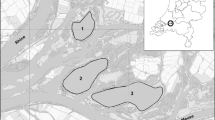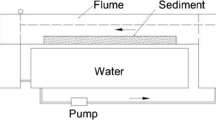Abstract
Alternative methodologies have been applied to the study of cadmium transfer in a food chain: water, microalgae (Skeletonema costatum and Tetraselmis suecica), oysters (Crassostrea gigas). The potential bioavailability of Cd in organisms was assessed through partitioning at the cell or tissue levels, and the predictive value of this method was evaluated by determining directly the metal transfer in an experimental food chain model. Cd concentrations were lower in S. costatum than T. suecica, in controls as well as in contaminated algae. In both algal species, Cd was firmly bound to the cell wall or had entered the cell. Cytosolic Cd was bound to intracellular ligands, the biochemical characteristics of which were not consistent with the hypothesis of detoxification via phytochelatins. In both algal species, Cd was predominantly present in the insoluble fraction, but at pHs such as those existing in the digestive tract of bivalves, it was easily extracted from the cells. Thus, exposure to Cd through phytoplanktonic food induced a significant uptake of this metal in soft tissues of bivalves. Due to the difference in Cd accumulation in algae, Cd doses associated with S. costatum were lower than those bound to T. suecica. Moreover, oysters retained a lower percentage of the metal associated with S. costatum compared to T. suecica (9 and 20%, respectively, after 21 days of exposure). Cd doses potentially available to oysters exposed directly in sea water were considerably higher, and direct uptake induced the highest levels of Cd incorporation but only 2% of dissolved Cd was actually retained by oysters over 21 days of exposure. In the soft tissues of oysters, Cd was distributed equally between soluble and insoluble fractions. Cytosolic Cd was present predominantly in the heat-stable fraction and mainly bound to compounds of molecular weight equal to 13.5 kDa. Moreover, a positive correlation was observed between metallothionein-like protein (MTLP) levels and gross concentrations of Cd in the soft tissues of oysters. These data are consistent with the hypothesis of an important role of metallothioneins in Cd metabolism in oysters and suggest a potential availability of MT-bound fraction of Cd to the consumers. These data are in agreement with the response of oysters exposed to Cd in the field.
Similar content being viewed by others
Author information
Authors and Affiliations
Additional information
Received: 27 July 1998/Accepted: 30 July 2000
Rights and permissions
About this article
Cite this article
Ettajani, H., Berthet, B., Amiard, J. et al. Determination of Cadmium Partitioning in Microalgae and Oysters: Contribution to the Assessment of Trophic Transfer. Arch. Environ. Contam. Toxicol. 40, 209–221 (2001). https://doi.org/10.1007/s002440010165
Issue Date:
DOI: https://doi.org/10.1007/s002440010165




